AI: Driving profitable revenue growth in the festive season
AI: Driving profitable revenue growth in the festive season
The end-of-year holiday period draws the highest revenues for retail businesses. For people and businesses alike, the festive season is a time for cheer and a positive buying attitude. In 2020, retailers braced for reduced sales margins as the pandemic continued disrupting markets. Despite the reduced footfalls, the holiday sales hit $876 billion in the US.

According to Rob Garf, VP, Industry Strategy for Retail, Salesforce, “The 2020 holiday season was defined by the pandemic and forced retailers and brands to innovate quickly with the introduction of services like curb side pickup, virtual concierges and a focus on social, messaging and live streaming to reach shoppers in new ways. We expect to see these new innovations remain in 2021 with holiday strategies becoming the new standard that consumers expect from their favorite retailers and brands.”
With the movement relaxations of 2021, we explore the role of artificial intelligence (AI) in powering holiday season sales. But before that, retailers must understand what has changed since 2020.

The world goes Phygital
The COVID-19 pandemic has changed the way consumers shop, pay, and communicate with retailers. Online retail sales grew over the last year, but as the world opens up, there is an opportunity for retailers to tap into the world of Phygital (Physical + Digital). The buzzword of the new normal, Phygital brings the best of both worlds wherein retailers can merge and blend consumers’ in-store and online experiences.
Mobiles and omnichannel experiences
While phygital is a hyped trend of 2020, mobile shopping continues to drive retail sales. Catering to the mobile world would require retailers to stress test their mobile experiences.
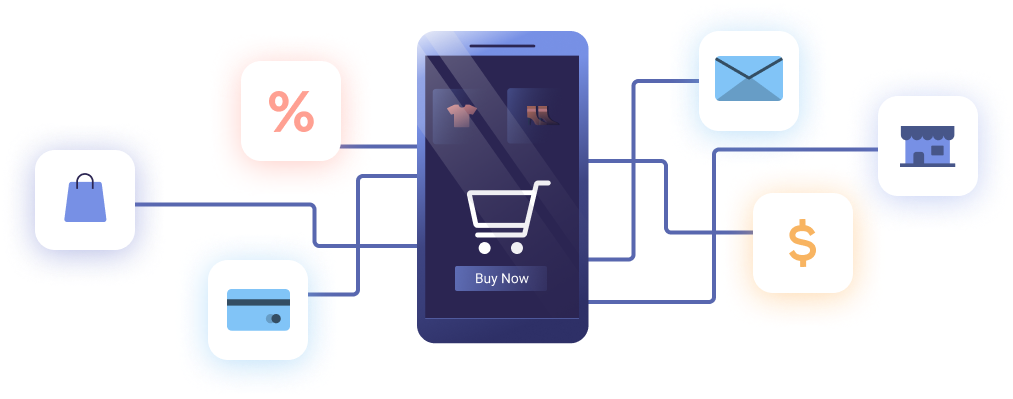
From mobile sites to apps to integrating with social media channels – retailers must look at reaching and supporting customers throughout their purchase journey. For instance, Nike store footfalls experienced a significant dip of 23 percent due to the ongoing movement restrictions. Nike was able to deliver a 9 percent increase in sales by combining its online and direct-to-consumer strategies.
Enhancing supply chains
As global supply chains came to a halt, retailers started seeing supply chains in a new light. In its initial days, the supply chain disruptions across geographies caused chaos amongst consumers. Retailers must accept that the vulnerabilities of the supply chain require a re-alignment in strategies. Traditional demand planning is no longer sufficient to handle market disruptions. Recent research by Capgemini highlights the difficulties in demand planning “due to a lack of accurate and up-to-date information on fluctuating customer demand during the pandemic.”
Luckily, that’s where AI comes to the rescue.
The evolving role of AI in retail for the festive season
The year-end sales rush is a time where terabytes of data get generated. Tapping into the data goldmine is enabled by AI-powered technologies. Over the years, retailers have understood the opportunities provided by enhanced data analytics. Retail store analytics, powered by AI, are helping organizations increase sales of strategic products or services, enable pricing and sales channel optimization, and identify revenue leakages.

Enabling the era of ‘voice commerce’
Voice-activated systems like Alexa and Siri, AI-enabled voice assistants are helping consumers shop smart and at ease. The ‘Voice commerce’ revolution is relatively new to the world of eCommerce. Over the last year, voice commerce has contributed over $2billion in sales – a tiny amount compared to the trillions in sales but is gaining traction across geographies.
Incorporating prescriptive analytics
Prescriptive analytics is a concept that builds on predictive analysis. Leveraging historical data, prescriptive analytics helps retailers understand variables, their effects, and how they can be fine-tuned to get the desired outcome.
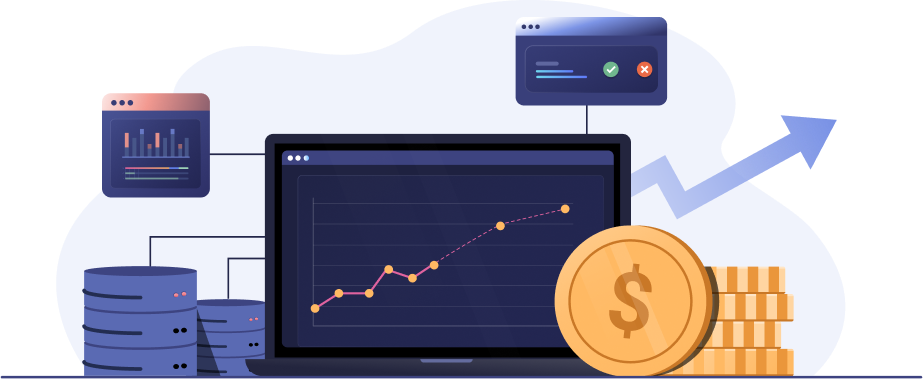
The applications of AI-prescriptive analytics go beyond traditional forecasting tools to predict churn rates and enable real-time decisioning. For example, Orangetheory Fitness leverages AI-backed prescriptive analytics to enable better consumer experiences. Collecting data over multiple centers, Orangetheory can predict customer in-flow to their centers and allocate necessary equipment or personnel to deal with the rush. The process enhances consumer engagement and experience while unlocking revenue potential across several touchpoints.
Enhancing inventory & supply management
The market volatilities of 2020 have forced retailers to focus on supply chain resilience. AI is an essential technology to address the challenges and opportunities across the supply chain. The analysis of large volumes of data helps retailers gain visibility into operations, manage inventories, and monitor orders effectively. For example, Kohl’s uses AI and ML to create a world-class supply chain network. It leverages the Digital Sourcing Optimizer, an AI tool that optimizes the cost of shipping and returns on inventory, to strengthen inventory management, boost customer satisfaction, and improve revenue profitability.
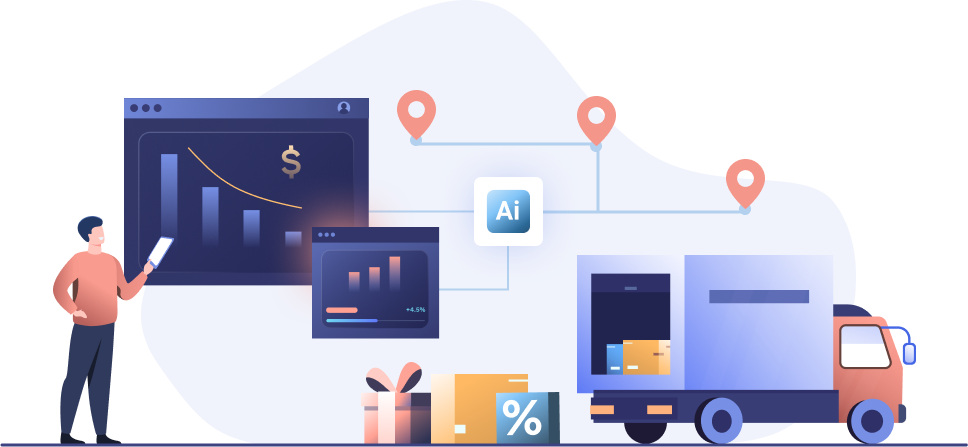
Hyper-personalization
AI paired with real-time data is an effective tool for retailers to refine hyper-personalized experiences. AI-powered personalized recommendations are a norm on big eCommerce platforms such as Amazon or Target. But the real challenge of hyper-personalization comes in its implementation across offline retail. In a world of phygital, retailers must see how to bring their online experience to life – so to say.
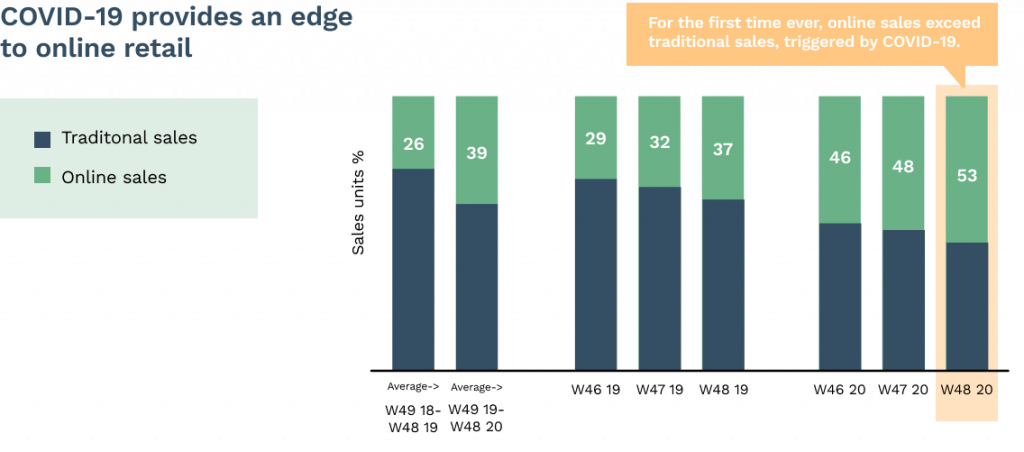
Here retailers can leverage AI and advanced data analytics to create customized loyalty programs, recommend products, provide personalized pricing, and even allow customers to pick up shopping where they left. For instance, Walmart introduced an AI-powered service that allows customers to text their grocery list to a store and get their ordered delivered.
Whereas Kroger is in the process of implementing digital shelves across its stores that are completely personalized according to the consumer.
The power of AI extends to the capabilities of ensuring a seamless hybrid experience for shoppers. For instance, Amazon Go outlets are designed to enable a contact-less and cashier-less shopping experience. The “just walk out” tech uses a combination of AI, computer vision, and sensor data to provide a futuristic retail experience. The model benefits consumers and retailers alike. While consumers can enjoy a frictionless experience, retailers can better understand customer behavior. The data collected enables retailers to link online and offline shopping history, personalize inventory, enhance restocking with real-time updates, optimize ROI and revenues and much more.
Embarking on an AI-driven Holiday Season
As the economy recovers slowly, retailers will need to work on encouraging customers to come back into stories. It will mean adopting a different strategy that truly adopts the essence of the omnichannel world. Compared to the world of eCommerce, the retail industry is slow to adapt to change. In-store analytics is still in its early stages of adoption and is majorly implemented by large retail chains.
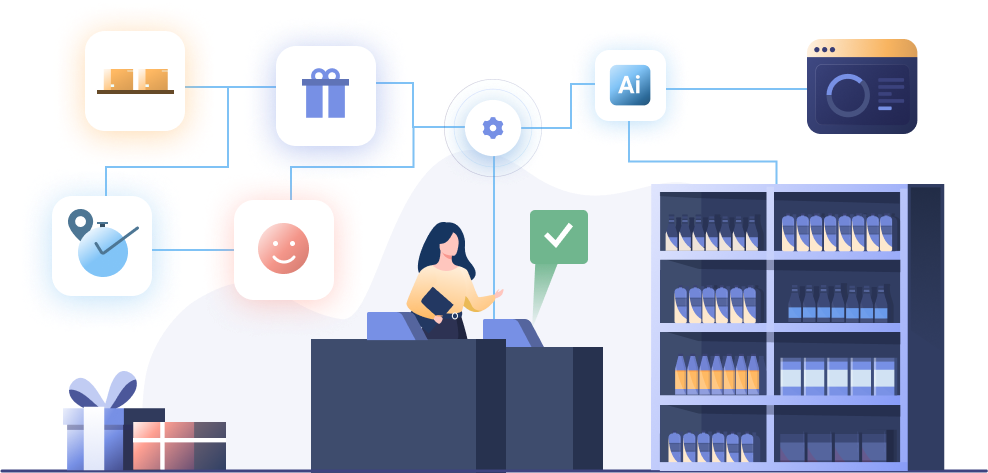
With AI, the retail sector can create a sustainable practice to extend its capabilities, identify new revenue opportunities, and implement effective strategies for the holiday season and beyond.
Hypersonix provides an end-to-end AI-powered analytics platform that go beyond traditional processes. The self-learning system helps retailers drive profitable revenue growth without compromising on the customer experience. Learn more on how Hypersonix solutions can help you improve sales this holiday season.





